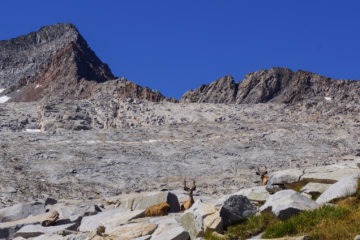In August 2020, the Great American Outdoors Act passed into law, marking a milestone in federal funding for U.S. public lands. The bipartisan legislation is poised to spur much-needed improvements in Yosemite and other national parks.
“This is a hugely important moment for national parks,” Yosemite Conservancy President Frank Dean says. “The influx of federal funding for deferred maintenance, alongside continued philanthropic support, means Yosemite and other parks will be able to tackle major infrastructural challenges while continuing to provide high-quality visitor programs, serve as hubs for scientific research, and more.”
In addition to fully and permanently funding the Land and Water Conservation Fund, the act established the National Parks and Public Land Legacy Restoration Fund, which provides $9.5 billion over the next five years (2021-2025) for deferred maintenance projects on federal lands. Most of that funding (70%) will go to National Park Service sites; the remainder will be distributed to areas managed by other agencies, such as the U.S. Forest Service. (Read the full text of the legislation here.)
“Deferred maintenance” refers to necessary repairs or maintenance on infrastructure and systems that have been postponed for at least a year due to budget constraints. Across the National Park System, deferred maintenance totals nearly $12 billion in much-needed work on bridges, parking areas, roads, housing, campgrounds and more. The new funding focuses on repairing and replacing existing infrastructure, not on adding new facilities. Yosemite has the largest backlog of deferred maintenance in the NPS — approximately $680 million. While it’s not yet known how much funding any individual park will receive, or which projects will be undertaken, major Yosemite-focused maintenance work could include repairing park roads and overhauling a wastewater treatment system.
And while the new federal funding flows in to fuel a massive, once-in-a-generation investment in infrastructure, Conservancy donors will continue to play an essential role in supporting the myriad high-priority projects that aren’t covered by government dollars. The grants our donors fund provide critical funding for scientific research, wildlife management, educational and youth programs, ecosystem restoration, and other projects and programs that don’t fall in the “deferred maintenance” category, and that wouldn’t happen with federal dollars alone.
“The Conservancy’s individual and institutional donors provide a margin of excellence in Yosemite,” Dean says. “This federal funding is vital to the park’s overall well-being, but the projects our donors fund go beyond roads and systems, to protect ecosystems and biodiversity, inspire new environmental stewards and leaders, and help us learn from the park’s history to shape a better future.”
This year, for example, funding from Conservancy donors has propelled field research on the rare Sierra Nevada red fox; enabled the Yosemite Bike Share to provide free two-wheeled transit in the Valley; replaced five dozen bear-proof food lockers at campsites in Wawona; restored trails and ecosystems throughout the park; helped high school students learn about environmental science, leadership and literacy through Adventure Risk Challenge; and much more.
Ultimately, the park’s future will be significantly shaped by both funding sources: continued philanthropic support, made possible by generous people who love Yosemite, and the monumental investment from the National Parks and Public Land Legacy Restoration Fund. Together, those resources will help ensure that Yosemite’s wildlife and habitats can thrive as the park welcomes and inspires visitors for generations to come.



